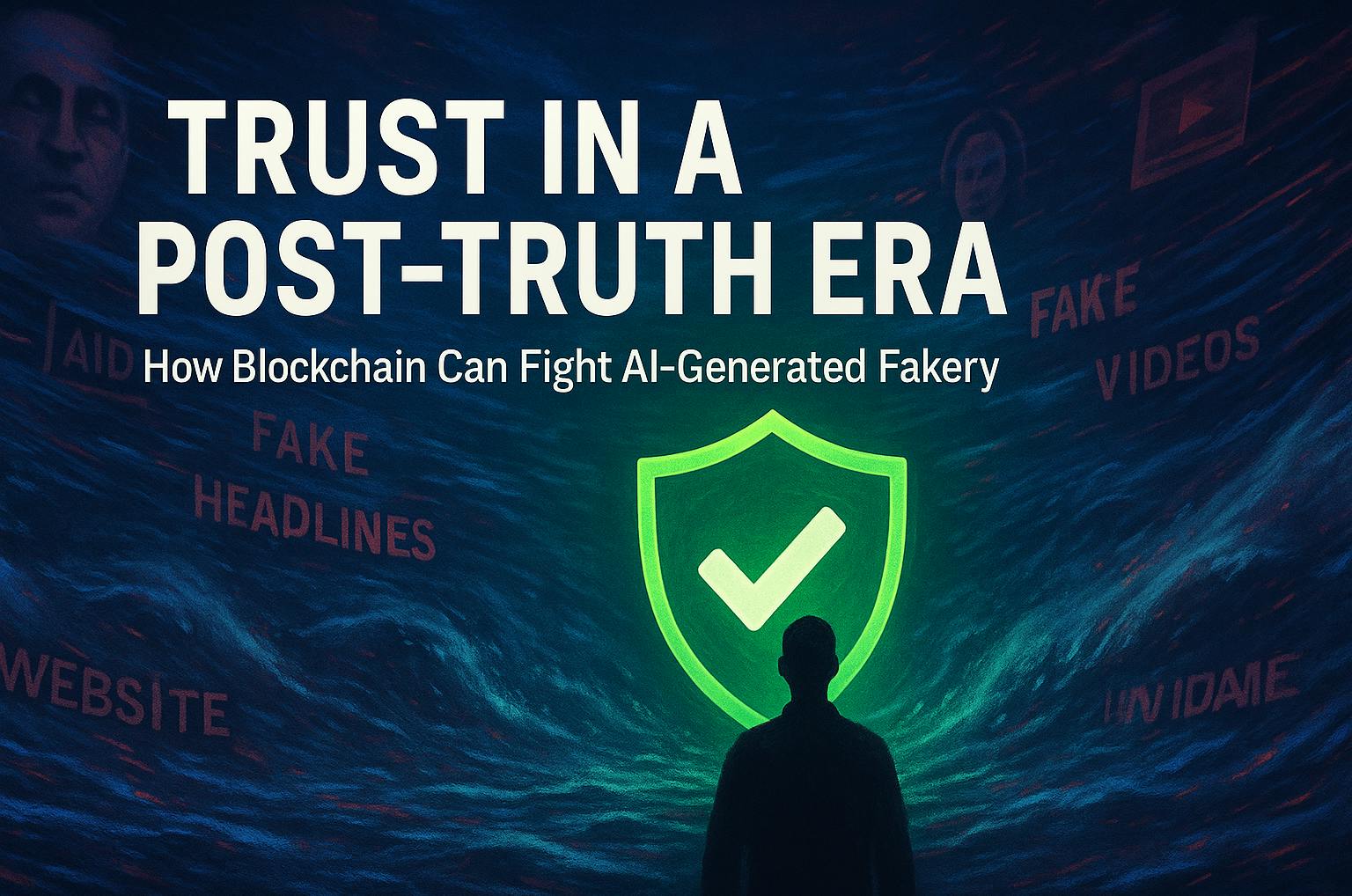“Burn the Witch! Burn the Witch!”
“I have a spell that can make it easy to differentiate AI-generated content from real content.”
Like me, you probably got hooked on this ‘burn the witch’ trend before you even realized those videos were AI-generated. Honestly, no one can fault you for that because the things we can do with AI are becoming increasingly limitless.
With tools like ChatGPT, DALL·E, Midjourney, Deepfakes, and more that can produce high-quality text, images, and videos on a massive scale, we face a greater risk of misinformation than ever before. Traditional methods like fact-checking have become too slow to keep us in the loop with the right information. So that begs the question: How do we maintain trust in a digital content era where anything can be faked instantly?
Keep reading, and you’ll learn the spell.
The AI Content Crisis—Why Trust Is Under Attack
Imagine watching a video of your favorite politician only to find out it was entirely fabricated by AI. How can we trust anything we see or read online anymore?
AI-generated content has never been more prevalent than it is now. For a generation whose trust issues run deep, the thought that any content you read—no matter how human it sounds—could have been generated using a language model like ChatGPT is unsettling. And to top it off, for every human-created video you scroll through, there are three more generated by AI tools like Deepfake. The worst part? You might not even realize that what you saw was AI-generated because how do you explain the voices and faces in the videos?
This puts us at risk of not just misinformation but also scams, propaganda, and political manipulation. For instance, there are numerous videos online of politicians saying things they never said. Fake news articles have been used to spread false narratives during elections, and synthetic reviews artificially inflate product reputations.
If you weren’t worried already, now would be a good time to start second-guessing the information you’ve consumed in the last few weeks. I know I have had to pause several times and try to confirm if what I was seeing was real—and now I’m less encouraged to turn to the internet in search of valuable information. Unfortunately, this is a looming epidemic.
Having to second-guess everything you come across on the internet is not a way to live, especially when it is already such an integral part of our lives. So, what can we do? Enter blockchain—a technology that promises to restore trust by creating a permanent, tamper-proof record of digital content.
Blockchain as a Digital Truth Ledger
Immutability and Transparency
Blockchain provides a solution and an anchor for truth thanks to its immutability, decentralization, and transparency.
Data recorded on a blockchain cannot be altered or deleted—it remains permanent. Also, the fact that no single party controls the data reduces censorship and tampering risks. In addition, these records can be publicly verified, enabling anyone to confirm authenticity.
Provenance Tracking and Verification
These properties work together to ensure that each piece of digital content can be time-stamped and linked to its original creator or publisher on the blockchain; consumers or platforms can verify if content matches the original record, flagging modifications or fakes. Decentralized storage systems like IPFS (Interplanetary File System) store actual content off-chain but link cryptographic hashes to the blockchain for verification.
Think of it as having a tamper-proof receipt or certificate attached to every piece of media, confirming its origin and identity. How much easier would life be, and how much more assured would you feel once you spot the seal that confirms originality? I know I would heave a sigh of relief.
Real-World Blockchain Applications Are Already Here
The great thing is, you don’t have to just imagine this happening or wait expectantly for it to become a reality—it’s already happening.
Toniq Labs uses NFTs (Non-Fungible Tokens) to represent digital assets’ origin and ownership.
Truepic provides verified photos and videos by cryptographically certifying content’s origin and integrity for journalism and insurance claims.
Adobe’s Content Authenticity Initiative embeds origin metadata into creative files to track authenticity and modifications, integrating blockchain to store this metadata securely.
Platforms like po.et enable creators to timestamp and claim ownership of written content metadata, helping verify publishing rights and originality.
Other use cases include journalistic content verification to fight fake news, scientific data authenticity to prevent research fraud, and supply chain transparency applied to digital goods. These projects empower creators and consumers by making authenticity verifiable and transparent, building trust in digital content.
Challenges on the Road to Mass Adoption
While blockchain can make our information generation more authentic, several hurdles remain:
Adoption and Usability
It’s not enough to have blockchains; convincing creators to encrypt their work on blockchain takes effort. Then there’s the need to make verification easy and seamless for average users.
Scalability Current blockchain networks have limits on transaction speed and cost, which challenge mass adoption for content verification. For example, Ethereum’s gas fees and transaction delays can be prohibitive for small-scale content verification.
Privacy vs Transparency
Blockchain’s transparency raises questions about how much transparency is too much transparency? What about sensitive information creators don’t want revealed, like identity or location? Exposing such data risks misuse. Solutions include off-chain storage, zero-knowledge proofs, privacy-focused blockchains, and permissioned blockchains where access is controlled. But balancing transparency and privacy remains a delicate, ongoing trade-off.
Interoperability
Different blockchain systems and protocols must work together for wide-scale effectiveness. Without cross-chain compatibility, users may experience friction, slowing adoption. Fragmentation may occur if verification tools are limited to specific blockchains. Solutions like cross-chain bridges—Polkadot, Cosmos, Chainlink — are bridging these gaps.
Regulatory and Ethical Questions
Because blockchain is decentralized, questions remain: Who oversees content verification? What laws apply? Who handles disputes? How to comply with privacy laws like GDPR when data is immutable? Ethical questions arise about who decides “truth,” risks of weaponizing verification to silence dissent, and potential marginalization of less tech-savvy users.
Collaborative efforts among regulators, technologists, and ethicists are essential to create frameworks ensuring blockchain tools are fair, transparent, accountable, and privacy-respecting.
The Road Ahead: Why Blockchain is Our Best Bet
Despite these challenges, blockchain stands out as our safest bet to deal with the AI-generated content pandemic. Positive signs include:
-
Growing interest from governments and media organizations in blockchain for verification.
-
Combining blockchain with AI-powered content scanners for layered authentication.
-
Developing open-source standards and protocols focused on digital content authenticity.
According to a 2023 Deeptrace report, deepfake videos increased over 900% between 2019 and 2023. A 2024 Gartner prediction estimates that by 2026, 75% of online content will be synthetically generated. The global blockchain market is expected to reach $67.4 billion by 2026 (ResearchAndMarkets), signaling strong momentum for such applications.
Given these trends, it’s only a matter of time before a decentralized, blockchain-backed system for content authenticity becomes a foundational trust layer of the internet—critical in combating misinformation and AI-generated fake content.
How Do We Move Forward?
I have good news and bad news. The bad news is, we will have to stay vigilant for AI-generated content for quite a while.
The good news is, while blockchain might not be a cure-all, it is a key enabler for verifying digital truth. However, we won’t get the full benefits if we don’t start adopting these verification systems soon.
My opinion? Innovators, creators, and platforms must collaborate quickly to restore trust in the digital world, using blockchain as a promising piece of this complex puzzle.
As digital citizens, staying informed and supporting technologies like blockchain can help protect the truth. The fight against AI-generated misinformation needs all of us.










